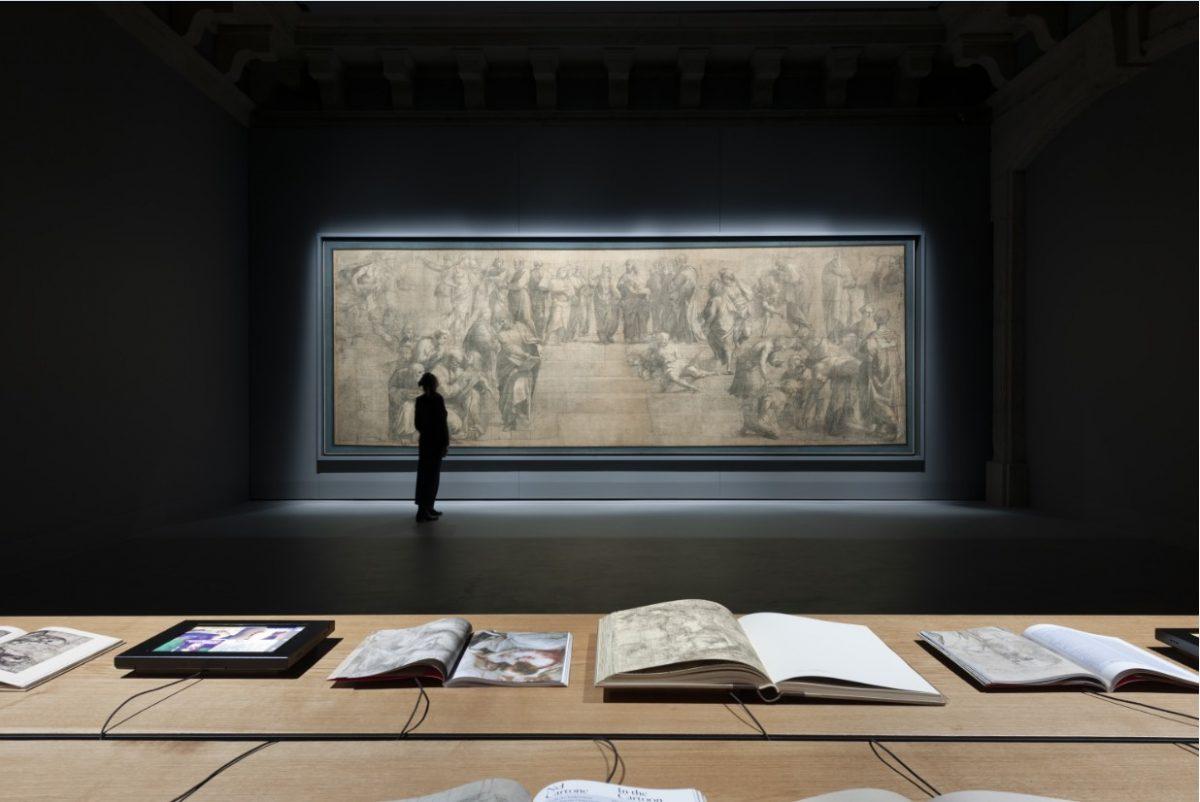Remarkably, one of the most recognizable works of art of the High Renaissance survives on two huge pieces of cardboard, comprising 210 sheets of paper in total. At 9 feet, 4 inches by 26 feet, 4 1/2 inches, the cartoon or preparatory drawing for Raphael’s “School of Athens” was publicly unveiled on March 27, 2019, at the Ambrosiana Gallery in Milan, Italy, after four years of restoration.

The new gallery for Raphael’s cartoon of the “School of Athens,” at the Ambrosiana Gallery in Milan, Italy. Paolo Rosselli/Stefano Boeri Architects






